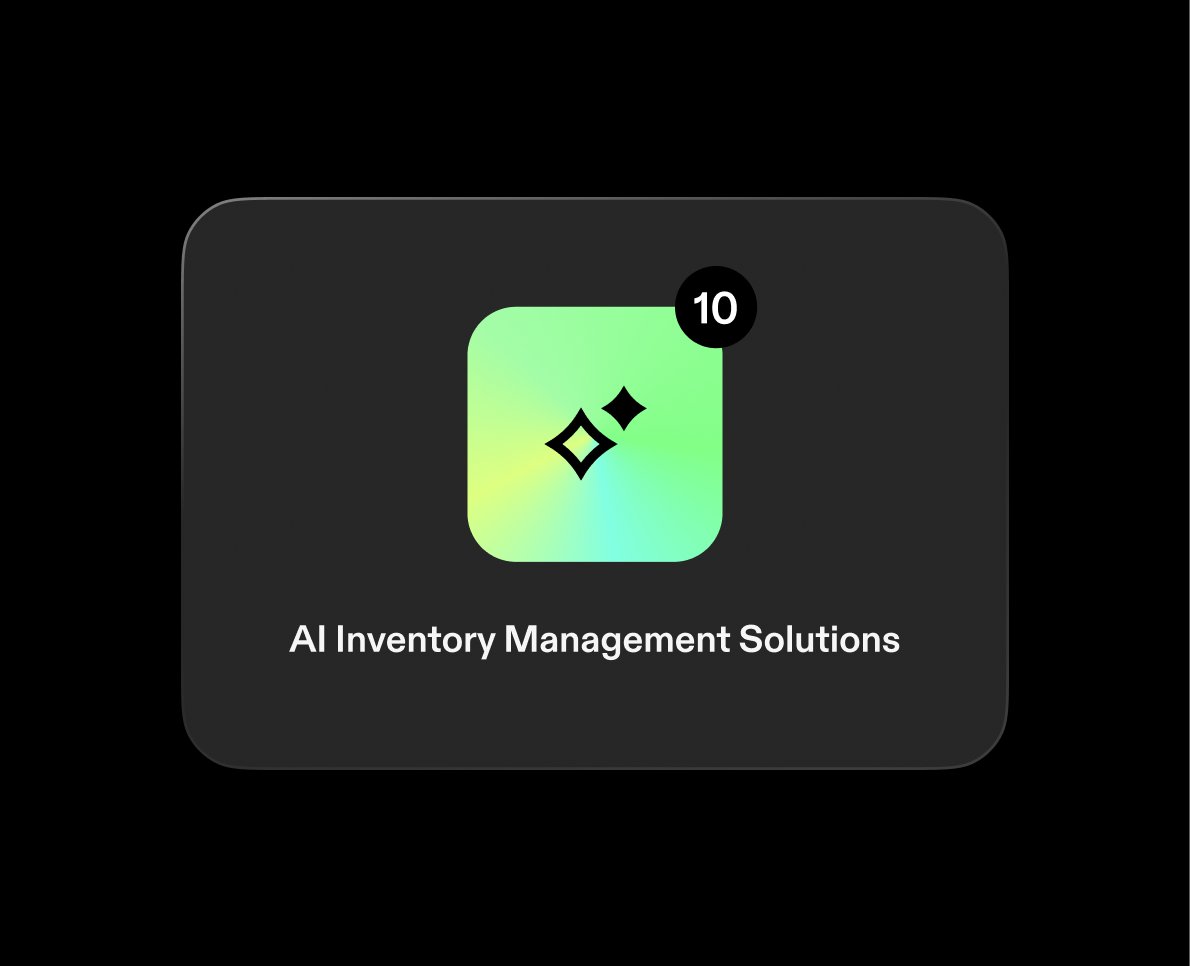As an ecommerce business, managing your inventory efficiently can make the difference between success and struggle. One of the key metrics for evaluating your inventory management is the inventory turnover ratio. In this guide, we’ll break down what this ratio is, why it’s crucial for your business, how to calculate it, and how to use it to make smarter decisions for your ecommerce operation.
What is Inventory Turnover Ratio?
The inventory turnover ratio is a metric that measures how efficiently a company sells and replaces its inventory over a year.
In simple terms, it shows how many times a business completely sells out and replenishes its inventory.
By understanding their ratio relative to industry standards, businesses can identify issues like overstocking, slow sales, or understocking, which could lead to missed sales.
A high ratio may indicate efficient inventory management, but could also suggest stockouts, while a low ratio may signal inefficiencies in sales or purchasing.
Comparing turnover ratios across products or categories allows businesses to align inventory with demand trends, improving stock management.
Ultimately, the ratio helps businesses identify growth opportunities, fine-tune strategies, and stay competitive within their industry.
What Does Inventory Turnover Ratio Tell You?
The inventory turnover ratio offers valuable insights that can guide strategic business decisions across various facets of operations.
It helps assess purchasing efficiency, indicating whether the purchasing department is ordering the right quantities in line with actual sales volumes. A rising inventory turnover ratio may also point to strong sales performance or effective marketing strategies that are driving demand.
For competitive positioning, comparing the turnover ratio to industry benchmarks allows businesses to evaluate their standing relative to competitors.
This analysis can provide clarity on whether a company is performing above or below industry standards. Additionally, calculating the ratio for different product categories can shed light on which items are selling quickly and which may require more attention or promotional effort.
For global brands, the inventory turnover ratio serves as a crucial barometer of overall operational health and efficiency. It highlights opportunities to optimize inventory management, reduce waste, and ultimately enhance profitability.
Understanding this ratio is essential for making informed decisions that lead to improved operational performance and a more robust bottom line.
How to Calculate Inventory Turnover Ratio
The inventory turnover ratio formula is calculated by dividing the Cost of Goods Sold (COGS) by the average inventory for the period:
To put it mathematically, the inventory turnover ratio formula is:
Inventory Turnover Ratio = Cost of Goods Sold (COGS) / Average Inventory
A higher merchandise turnover ratio generally indicates that a company is selling its products quickly, which is often considered a positive sign of operational efficiency and strong sales performance.
Why is Inventory Turnover Ratio Important for Ecommerce Businesses?
For ecommerce businesses operating across multiple channels and markets, monitoring the inventory turnover ratio is essential.
A higher turnover ratio optimizes cash flow by preventing capital from being tied up in unsold inventory, enabling more frequent reinvestment in growth opportunities.
It also reduces storage costs, particularly for businesses managing multiple fulfillment centers, by maintaining lower average inventory levels.
For those selling perishable or trend-sensitive items, a higher turnover ensures customers receive the freshest or most relevant products.
Additionally, efficient inventory turnover mitigates the risks of obsolescence, damage, or depreciation from holding stock too long.
Understanding the turnover ratio is crucial for scalability, as it helps forecast inventory needs more accurately when expanding into new markets or sales channels.
For growth-oriented brands scaling globally, this ratio becomes even more significant, directly influencing working capital requirements and logistics planning across international borders.
What is a Good Inventory Turnover Ratio?
The ideal inventory turnover ratio strikes a balance between two competing concerns. A ratio that's too low suggests overstocking, capital being tied up in unsold inventory, and the risk of obsolescence.
On the other hand, a ratio that's too high may indicate understocking, leading to stockouts and lost sales opportunities.
What ultimately constitutes a "good" inventory turnover ratio varies significantly by industry, business model, and product type.
Researching your industry as well as expecting shifts in response to changing market trends and trading regulation change can help inform your inventory turnover strategy.
For ecommerce businesses operating across multiple channels, aiming for the higher end of your industry's average range typically represents a healthy balance between product availability and operational efficiency.
Inventory Turnover Ratio in Today's Market: Navigating Global Trading and Regulations
In today's volatile global marketplace, characterized by shifting trade regulations, supply chain disruptions, and rapidly evolving consumer preferences, maintaining optimal inventory levels has become increasingly complex but nonetheless vital for cross border ecommerce.
Several factors make understanding and adapting inventory turnover ratios more critical than ever:
Tariff Fluctuations
Sudden changes in import or export tariffs can dramatically affect procurement costs and timelines, requiring businesses to adapt inventory strategies quickly.
Shipping Uncertainties
Recent years have demonstrated how vulnerable global shipping can be to disruptions. Businesses with efficient inventory management can pivot more readily when faced with logistics challenges.
Cross Border Complexity
For brands selling internationally, navigating varying compliance requirements across regions requires sophisticated inventory planning that balances regulatory compliance with turnover efficiency.
Demand Volatility
Post-pandemic consumer behavior continues to evolve unpredictably, making historical data less reliable for forecasting. Real-time and responsive data is essential for adapting to quickly changing tastes to offload underperforming stock or to meet the demands of a viral product.
In this environment, the ideal inventory turnover ratio has shifted slightly upward for many businesses. Companies are increasingly prioritizing agility over maintaining excessive safety stock, with many ecommerce businesses now targeting ratios 15-20% higher than pre-pandemic benchmarks.
This shift reflects a strategic emphasis on responsiveness and capital efficiency over the traditional security of larger inventory buffers.
How to Improve Your Inventory Turnover Ratio
For operations teams struggling with data complexity and repetitive tasks, improving inventory turnover ratio represents a significant opportunity. Here are strategic approaches to enhance your ratio:
1) Implement Advanced Forecasting
Leverage AI-powered demand forecasting tools that analyze historical sales data, seasonal trends, and market indicators to predict future inventory needs more accurately.
2) Adopt Just-in-Time (JIT) Principles
Work with suppliers to reduce lead times and implement more frequent, smaller orders where appropriate.
3) Optimize Product Mix
Regularly analyze product performance data to identify slow-moving items that may be dragging down your overall ratio.
4) Enhance Supplier Relationships
Negotiate more flexible terms with key suppliers, including consignment arrangements or vendor-managed inventory options.
5) Centralize Inventory Management
For businesses with multiple warehouses or sales channels, implementing a centralized inventory management system provides visibility and prevents siloed decision-making.
6) Dynamic Pricing Strategies
Use automated pricing tools to adjust prices based on inventory levels, helping clear slow-moving stock when necessary.
7) Cross-Channel Synchronization
Ensure inventory is visible and accessible across all sales channels to prevent channel-specific stockouts or overstocking.
Is a Higher Inventory Turnover Ratio Always Better?
While a higher inventory turnover ratio often signals efficient operations, it's not always the ideal goal. Extremely high turnover can lead to stockouts, negatively affecting customer satisfaction and loyalty.
It may also result in missed opportunities for volume purchasing discounts or more efficient shipping arrangements. Additionally, the constant cycle of receiving, processing, and shipping inventory can increase labor costs and operational complexity.
For businesses with seasonal demand, strategically building inventory ahead of peak periods may lower the ratio temporarily. The key is to find the optimal turnover ratio for your business—one that balances efficiency with customer satisfaction and operational capabilities.
For most ecommerce businesses, this means aiming for the higher end of the industry average while ensuring enough safety stock to avoid stockouts of critical items.
Taking Control of Your Inventory Management
Mastering your inventory turnover ratio isn't just about calculating a number—it's about implementing systems and strategies that give you control over this critical aspect of your business.
Modern ecommerce operations require sophisticated tools to manage inventory efficiently across multiple channels, warehouses, and international markets.
By leveraging advanced inventory management systems that provide real-time visibility and predictive analytics, growth-oriented brands can optimize their inventory turnover ratio while maintaining the flexibility to respond quickly to market changes.
Understanding and strategically managing your inventory turnover ratio empowers your business to free up working capital, reduce storage costs, minimize waste, and ultimately deliver better customer experiences—all contributing directly to your bottom line.
Ready to take your inventory management to the next level?
Discover how Swap Commerce's AI-powered inventory management system can help you optimize your inventory turnover ratio while streamlining operations across all your sales channels. Sign up to hear updates and be the first to know when Swap Inventory goes live!






















